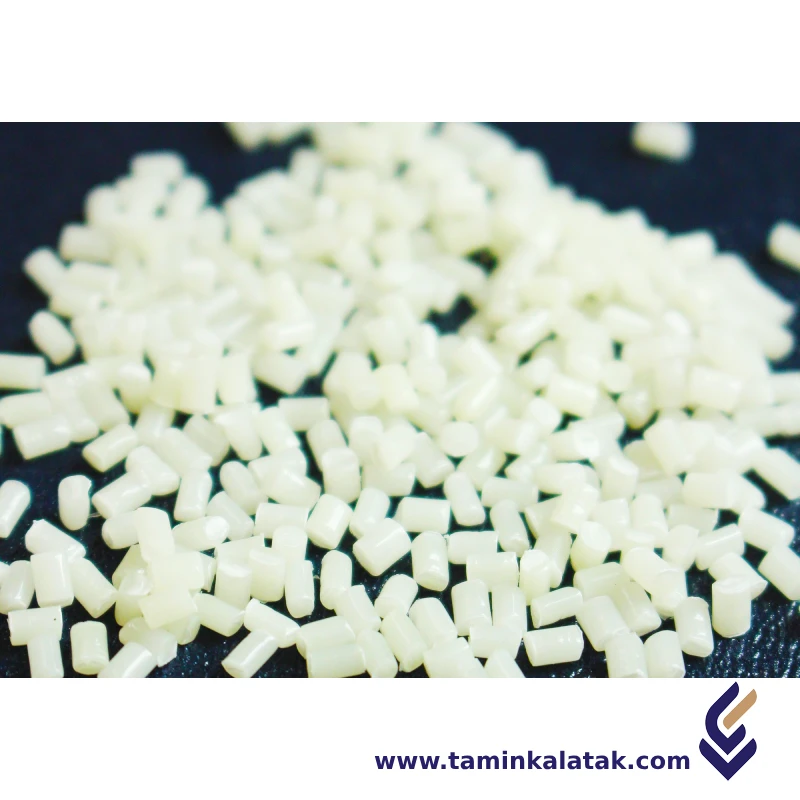Polymers are made up of very large molecules made up of many repeating units called monomers, which ultimately form this long polymer chain
A compound is a polymer blend mixed with additives, fillers, and reinforcements to achieve specific properties for end-use applications. A masterbatch is a concentrated mixture of additives or pigments in a carrier resin, used to enhance plastics without altering their base properties.
Anti-UV Masterbatch
Anti-UV Masterbatch is a specialized additive used in plastic manufacturing to enhance the UV resistance of polymer-based products. It consists of ultraviolet (UV) stabilizers and absorbers dispersed in a carrier resin, making it easier to incorporate into plastic during processing.
Structure
The structure of an anti-UV masterbatch consists of a combination of UV stabilizers, a carrier resin, and sometimes additional additives to enhance performance. The UV stabilizers, which can include UV absorbers and hindered amine light stabilizers (HALS), are the active components that protect plastics from degradation by absorbing or neutralizing harmful ultraviolet radiation. These stabilizers are uniformly dispersed within a carrier resin, which is typically the same or compatible with the final polymer to ensure easy blending during processing. The carrier resin acts as a medium that holds and delivers the UV stabilizers into the plastic matrix. Depending on the application, other additives such as antioxidants, processing aids, or heat stabilizers may be included to improve the overall durability of the final product. The masterbatch is typically produced in pellet or granular form, allowing for uniform distribution when mixed with base polymers during the manufacturing process.
Properties
Anti-UV masterbatch possesses several key properties that enhance the durability and performance of plastic products exposed to sunlight. It effectively absorbs and dissipates ultraviolet radiation, preventing polymer degradation, discoloration, and brittleness. The masterbatch is designed to be thermally stable, ensuring that it can withstand high processing temperatures without losing its effectiveness. It is highly compatible with various polymers, including polyethylene, polypropylene, PVC, and ABS, allowing for easy incorporation into different plastic formulations. The dispersion quality is crucial, ensuring uniform distribution of UV stabilizers within the polymer matrix to achieve consistent protection. Additionally, anti-UV masterbatch can be tailored to specific applications by combining different types of UV stabilizers, such as UV absorbers and hindered amine light stabilizers (HALS), for comprehensive protection. It also maintains the mechanical properties of plastics over time, reducing surface cracking and extending the lifespan of products used in outdoor or high-exposure environments.
Applications
- Agricultural films, such as greenhouse covers and mulch films, to protect crops from UV damage.
- Outdoor furniture and construction materials, including pipes, sheets, and roofing, to prevent weathering and brittleness.
- Automotive plastic parts, such as dashboards and exterior trims, to resist sun-induced fading and cracking.
- Packaging materials, especially for products sensitive to UV exposure, such as food and pharmaceuticals.
- Electrical and electronic components, ensuring longer durability for plastic casings exposed to sunlight.
- Textile fibers and synthetic fabrics, improving UV resistance in outdoor clothing and industrial fabrics.
Advantages
- Protects plastics from UV-induced degradation, extending product lifespan.
- Reduces discoloration, brittleness, and surface cracking in exposed plastic materials.
- Enhances thermal stability, making it suitable for high-temperature processing.
- Compatible with various polymers, allowing flexibility in application.
- Cost-effective solution compared to using inherently UV-resistant polymers.
Disadvantages
- May slightly alter the color or transparency of clear plastic products.
- Effectiveness depends on the concentration and type of stabilizer used.
- Higher costs compared to non-UV-stabilized plastic formulations.
- Prolonged exposure to extreme UV conditions may still lead to gradual degradation over time.
Applications
Anti-UV Masterbatch
| Products | MFI(g/ 10 min) | Density (g/Cm³) | Applications | Process method | Data Sheet | MSDS |
|---|---|---|---|---|---|---|
| Anti-UV masterbatch | 5-25 | 0.90-1.20 | Agriculture Packaging Automotive Construction Textile and Fibers | Injection Molding Blow Molding Extrusion Rotational Molding |







